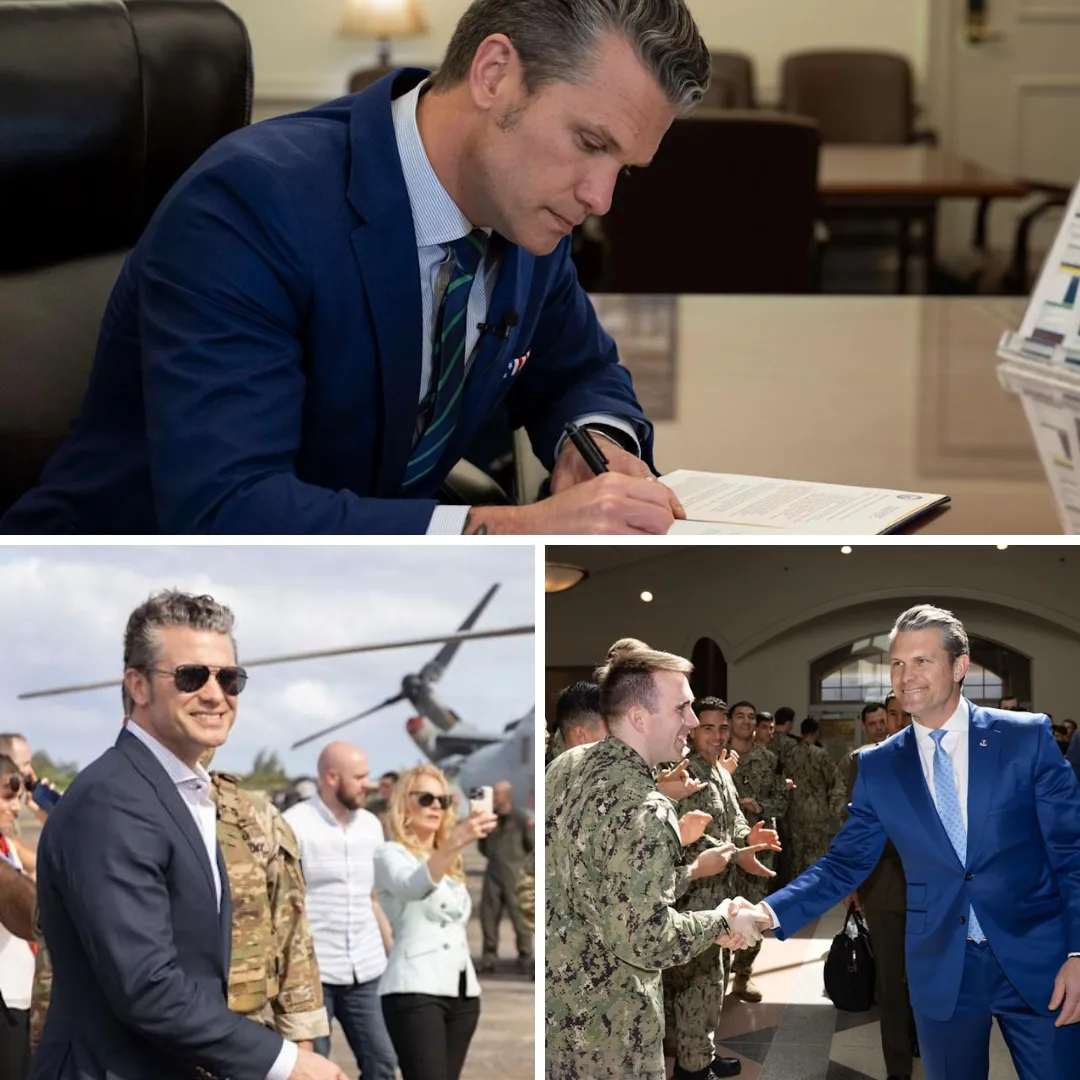
The United States is openly weighing the possibility of reducing its military footprint in South Korea, a move that underscores the Trump administration’s broader recalibration of forces across the Indo-Pacific to address the evolving threats posed by China.
As of now, approximately 28,500 American troops are stationed in South Korea under long-standing agreements to support the defense of Seoul from potential aggression by North Korea.
However, this presence, while deeply rooted in decades of alliance, is no longer seen as untouchable as the global security environment undergoes rapid transformation.
Senior defense officials accompanying U.S. Secretary of Defense Pete Hegseth during his recent trip to Singapore made clear that a drawdown in South Korea is on the table as part of a wider strategic realignment.
Although no final decision has been made, the statements reflect a growing emphasis on strategic flexibility and resource optimization as the United States seeks to maintain a credible deterrence posture against both Pyongyang and Beijing.
This evolution in policy direction is not a sign of abandonment but of adaptation, aimed at ensuring U.S. military power remains agile, efficient, and poised to meet the most urgent security challenges.
The Indo-Pacific region has become the focal point of American defense planning, with particular attention on China’s military modernization, assertive territorial claims, and increasing willingness to project power beyond its borders.
The situation in Taiwan, the South China Sea, and the wider maritime domain of the Western Pacific has led the Trump administration to rethink how and where American forces are deployed.
The goal is to create a posture that is not only robust and regionally integrated but also strategically distributed to avoid vulnerabilities and maximize operational reach.
The idea of repositioning forces from South Korea must be seen in this context. U.S. officials have stressed that any changes would be made not in response to a weakening of the alliance with Seoul but as part of a larger plan to redistribute forces in a way that enhances regional deterrence and overall combat readiness.
The presence of troops in South Korea will remain a pillar of U.S. regional engagement, but that pillar may take on a new form depending on evolving geopolitical realities.
Secretary Hegseth’s visit to Singapore for the annual Shangri-La Dialogue provided the backdrop for this significant policy discussion. As one of the most important strategic summits in Asia, the dialogue attracts defense ministers, military chiefs, and policy experts from across the globe.
For Hegseth, attending the dialogue offered a timely platform to articulate the administration’s vision for the Indo-Pacific, one that balances enduring commitments with the necessity of strategic recalibration.
His remarks and meetings emphasized a future-oriented defense doctrine—one that anticipates tomorrow’s threats rather than merely reacting to yesterday’s.
While South Korea’s defense minister did not attend this year’s event due to elections in Seoul, discussions about troop deployments and alliance management were still front and center.
Officials close to the deliberations made it clear that any future U.S. troop levels in South Korea would reflect a dual mandate: to ensure South Korea’s defense against North Korea and to strengthen the broader deterrence posture vis-à-vis China.

This means thinking creatively about force mobility, joint exercises, basing agreements, and regional logistics—ensuring that U.S. forces are positioned where they can respond most effectively and rapidly.
The discussions also come at a time when U.S. defense policy is increasingly shaped by a need to balance limited resources against a growing number of complex threats.
From cyberwarfare and hypersonic missile development to gray-zone conflict and disinformation campaigns, the modern battlefield is as much about positioning and agility as it is about static numbers.
Secretary Hegseth, who has already begun streamlining Pentagon operations and eliminating redundancy, is leading a charge toward what he has called a “leaner but meaner” force structure that maximizes every dollar and every deployment.
For decades, the American presence in South Korea has served as a symbol of solidarity and deterrence. That symbolism remains vital. But the threats of 2025 are different from those of 1975 or even 2005.
China’s expanding navy, missile capabilities, and increasingly assertive behavior in disputed areas demand a reexamination of traditional force structures.
The Trump administration appears ready to take on this challenge directly, and Secretary Hegseth’s leadership reflects a pragmatic recognition that security today requires adaptability.
Any shift in troops will be done with coordination and transparency. U.S. officials have reiterated their commitment to consulting with allies before making final decisions.
South Korea remains one of the United States’ most important partners, and there is no indication that the alliance is weakening.
Instead, what is emerging is a more sophisticated alliance dynamic—one that includes not just fixed troop numbers but a shared understanding of strategic purpose, technological integration, and mission adaptability.
While some may view a potential drawdown as a concession or retreat, in reality, it may well enhance deterrence by increasing U.S. flexibility.
By redistributing forces across more locations in the region—including potential expansion in the Philippines, Guam, Australia, and even select Southeast Asian nations—the U.S. can create a more unpredictable and resilient force posture.
This approach complicates adversarial planning and improves response times, ultimately making American forces harder to target and easier to deploy.
Moreover, the possibility of shifting troops does not mean the end of U.S.-South Korea defense cooperation. On the contrary, it could open the door to deeper collaboration in other domains such as space, cyber, and missile defense.
Modern alliances are no longer defined solely by boots on the ground. They are defined by shared strategy, interoperability, intelligence-sharing, and technological innovation.
These areas offer fertile ground for U.S.-Korean cooperation, particularly as both nations face emerging non-traditional threats.
The timing of the discussion is no accident. As the Shangri-La Dialogue convened, tensions across the Taiwan Strait, the South China Sea, and the Korean Peninsula continued to simmer.
China’s provocative behavior in these theaters, including aggressive naval operations and airspace incursions, has sharpened the urgency of U.S. force planning.
By signaling openness to troop redistribution, the Trump administration is making clear that it will not be hemmed in by past assumptions when addressing new challenges.
Secretary Hegseth’s presence at the center of this strategic debate reflects his growing role not just as a manager of the Pentagon but as a thought leader on national security.
His focus on eliminating waste, reinforcing readiness, and revitalizing alliances has brought a new energy to defense planning. The question of South Korea troop levels is just one example of a larger philosophy that prioritizes outcome over optics.
To those who fear that shifting troop numbers might weaken deterrence against North Korea, officials have been clear: the capability to respond to threats from Pyongyang remains ironclad.
U.S. forces in the region, including strategic assets such as submarines, bombers, and missile defense systems, offer a wide range of options that do not depend on a fixed number of personnel in one country.
Deterrence in the modern era is multidimensional, and the Trump administration is determined to wield that complexity to its advantage.

As deliberations continue, allies and adversaries alike are watching closely. The message from Singapore is simple but firm: the United States is here to stay in the Indo-Pacific.
But how it stays, where it stays, and with what posture will be determined not by tradition but by strategic necessity. Secretary Pete Hegseth’s leadership is ensuring that these decisions are made with clarity, strength, and a forward-looking perspective that places America’s long-term interests first.
In this evolving chessboard of power, flexibility is not weakness—it is strategy. And the willingness to reconfigure troops in pursuit of a more secure Indo-Pacific is the kind of bold thinking that defines strong leadership.
Whether forces in South Korea remain at current levels or are adjusted to meet new realities, one thing is certain: under this administration, the U.S. military remains focused, formidable, and ready for the future.




-1746763158-q80.webp)
